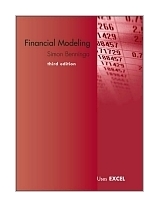|
||
podział tematyczny • wydawnictwa anglojęzyczne podział tematyczny Newsletter: • Zamów informacje o nowościach z wybranego tematu Informacje: • sposoby płatności i dostawy • kontakt • Cookies na stronie • Regulamin zakupów Napisz propresssp@gmail.com |
FINANCIAL MODELLINGBENNINGA S.wydawnictwo: MIT PRESS , rok wydania 2008, wydanie IIIcena netto: Too often, finance courses stop short of making a connection between textbook finance and the problems of real-world business. Financial Modeling bridges this gap between theory and practice by providing a nuts-and-bolts guide to solving common financial models with spreadsheets. Simon Benninga takes the reader step by step through each model, showing how it can be solved using Microsoft Excel®. In this sense, this is a finance "cookbook," providing recipes with lists of ingredients and instructions. Areas covered include computation of corporate finance problems, standard portfolio problems, option pricing and applications, and duration and immunization. The second edition contains six new chapters covering financial calculations, cost of capital, value at risk (VaR), real options, early exercise boundaries, and term structure modeling. A new technical chapter contains a potpourri of tips for using Excel®. Although the reader should know enough about Excel® to set up a simple spreadsheet, the author explains advanced Excel® techniques used in the book. The book includes chapters dealing with random number generation, data tables, matrix manipulation, and VBA programming. It also comes with a CD-ROM containing Excel® worksheets and solutions to end-of-chapter exercises. Simon Benninga is Professor of Finance at Tel Aviv University and Visiting Professor of Finance at the Wharton School at the University of Pennsylvania. Table of Contents
1168 pages, Hardcover Księgarnia nie działa. Nie odpowiadamy na pytania i nie realizujemy zamówien. Do odwolania !. |


